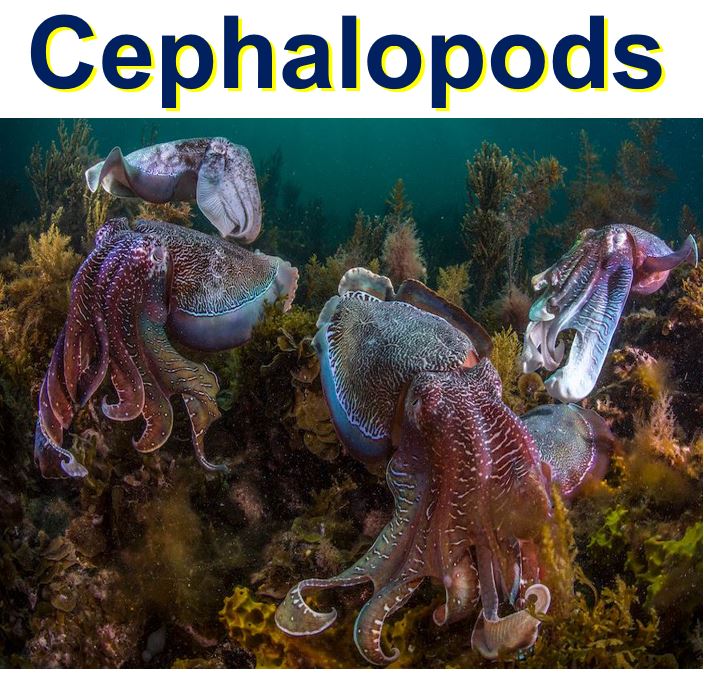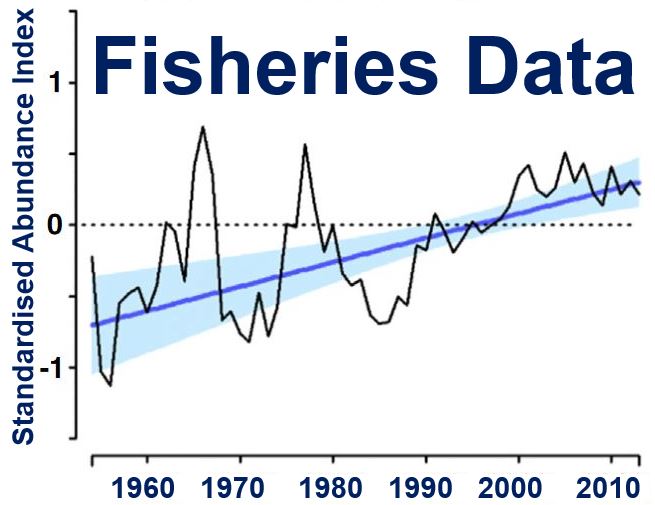As sea temperatures rise so do squid, octopus and cuttlefish populations – they are one of the few species that appear to be thriving as a result of human-induced climate change, according to a study carried out by a team of international scientists from Australia, The Falkland Islands, Portugal, Spain and South Africa.
Details of the study, led by scientists from the University of Adelaide’s Environment Institute, have been published in the scientific journal Current Biology.
Dr. Zoë Doubleday, Research Fellow in the Environment Institute and School of Biological Sciences, and colleagues compiled a global database of cephalopod catch rates to determine what the long-term trends in abundance have been over the past six decades.
 Human-induced climate change is warming up our oceans. Most marine species are suffering, except for cephalopods – octopus, squid and cuttlefish. Cephalopod populations across the world are increasing as sea temperatures rise. (Image: blogs.adelaide.edu.au/environment)
Human-induced climate change is warming up our oceans. Most marine species are suffering, except for cephalopods – octopus, squid and cuttlefish. Cephalopod populations across the world are increasing as sea temperatures rise. (Image: blogs.adelaide.edu.au/environment)
Cephalopods are the largest of all molluscs and include cuttlefish, octopuses, squid and the chambered nautilus. These intelligent invertebrates have suckered tentacles, camera-like eyes, skin that changes colour, and complex learning behaviour.
Cephalopods are among the most neurologically advanced of all invertebrates (animals lacking a backbone).
Cephalopods – ‘weeds of the sea’
Dr. Doubleday, who was lead study author, said:
“Our analyses showed that cephalopod abundance has increased since the 1950s, a result that was remarkably consistent across three distinct groups. Cephalopods are often called ‘weeds of the sea’ as they have a unique set of biological traits, including rapid growth, short lifespans and flexible development.”
“These allow them to adapt to changing environmental conditions (such as temperature) more quickly than many other marine species, which suggests that they may be benefiting from a changing ocean environment.”
 Fisheries data shows that cephalopod populations have been rising steadily for more than half a century. (Image: Current Biology)
Fisheries data shows that cephalopod populations have been rising steadily for more than half a century. (Image: Current Biology)
The authors say their research stemmed from an investigation of shrinking numbers of the iconic Giant Australian cuttlefish (Sepia apama)
Regarding the Giant Australian cuttlefish, Dr. Doubleday said:
“There has been a lot of concern over declining numbers of the iconic Giant Australian cuttlefish at the world-renowned breeding ground in South Australia’s Spencer Gulf. To determine if similar patterns were occurring elsewhere, we compiled this global-scale database.”
“Surprisingly, analyses revealed that cephalopods, as a whole, are in fact increasing; and since this study, cuttlefish numbers from this iconic population near Whyalla are luckily bouncing back.”
Marine habitat change favouring cephalopod populations
Study leader, Bronwyn Gillanders, a Professor at the University of Adelaide’s School of Biological Sciences, and also Deputy Director of the Environment Institute, says that large-scale changes to marine habitats, brought about by human activities, could be helping push up global cephalopod populations.
Prof. Gillanders said:
“Cephalopods are an ecologically and commercially important group of invertebrates that are highly sensitive to changes in the environment. We’re currently investigating what may be causing them to proliferate – global warming and overfishing of fish species are two theories.”
“It is a difficult, but important question to answer, as it may tell us an even bigger story about how human activities are changing the ocean.”
Our global #cephalopod story in @CurrentBiology is finally out! @environmentinst w @BronGillanders @taaprowse et al https://t.co/KdUUaaN6Qk
— Zoe Doubleday (@Zoe_Doubleday) May 23, 2016
Cephalopods, of which there are more than 800 extant (existing) species, are found in all types of marine habitats. They live in most depths of the ocean, from the sea surface to the abyssal plain (from 3000 to 6000 metres deep).
As well as being voracious predators, they are also a major source of food for several forms of marine life, and humans.
Dr. Doubleday said:
“As such, the increase in abundance has significant and complex implications for both the marine food web and us.”
In a Summary of the main article, the authors wrote:
“Our results suggest that large-scale, directional processes, common to a range of coastal and oceanic environments, are responsible. This study presents the first evidence that cephalopod populations have increased globally, indicating that these ecologically and commercially important invertebrates may have benefited from a changing ocean environment.”
Citation: “Global proliferation of cephalopods,” Antoni Quetglas, Warwick Sauer, Bronwyn M. Gillanders, Zoë A. Doubleday, Thomas A.A. Prowse, Alexander Arkhipkin, Stephen C. Leporati, Sílvia Lourenço, Graham J. Pierce, Jayson Semmens & Michael Steer. Current Biology. 23 May 2016. DOI: 10.1016/j.cub.2016.04.002.
Video – Colourful Cephalopods
This California Academy of Sciences video explains how cephalopods change colours.
